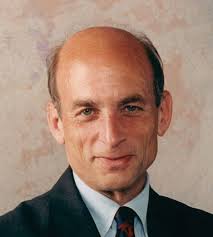Janus Investment Fund’s (JIF) prospectus included a misstatement about market timing. Its investment adviser and administrator is Janus Capital Management (JCM). Plaintiff shareholders in the parent company, Janus Capital Group (JCG) argue in the Supreme Court that JCM should be liable as JIF’s manager for “mak[ing] an[] untrue statement of a material fact” in violation of Rule 10b-5 (and also that JCG should be liable as a control person).
The conservative five-member majority, in an opinion by Justice Thomas, rejected the argument that an investment advisor is the “maker” of the statement by its mutual fund, whose formal legal independence everybody including the SEC recognized.
The dissenters insist this ignores the reality of JCM’s control of JIF, and was not compelled by the word “make” in 10b-5. Moreover, they worried the majority’s approach could leave nobody responsible in some situations — not the managers who actually drafted a false statement nor the innocent board that made the statement. Even the SEC couldn’t go after the managers for aiding and abetting without a primary violator.
What’s really happening here is that the Court is facing the consequences of its 2008 Stoneridge aiding and abetting opinion and Central Bank which preceded it, as well as of the mess of mutual fund regulation left unresolved by last term’s Jones v. Harris.
The Court said its decision followed from Stoneridge’s holding denying liability of the defendant customers and suppliers because their acts didn’t make it “necessary and inevitable” that the transactions would be falsely accounted for. In other words, the final decision was made by the company that actually made the decision to issue the disclosure documents. Same in Janus.
The Court also noted its decision was made necessary by the decision Stoneridge elaborated on, the Court’s 1994 ruling in Central Bank to deny a private right of action against aiders and abetters:
A broader reading of “make,” including persons or entities without ultimate control over the content of a statement, would substantially undermine Central Bank. If persons or entities without control over the content of a statement could be considered primary violators who “made” the statement, then aiders and abettors would be almost nonexistent.6
6 The dissent correctly notes that Central Bank involved secondary, not primary, liability. Post, at 4 (opinion of BREYER, J.). But for Central Bank to have any meaning, there must be some distinction between those who are primarily liable (and thus may be pursued in private suits) and those who are secondarily liable (and thus may not be pursued in private suits).
We draw a clean line between the two—the maker is the person or entity with ultimate authority over a statement and others are not. In contrast, the dissent’s only limit on primary liability is not much of a limit at all. It would allow for primary liability whenever “[t]he specific relationships alleged . . . warrant [that] conclusion”—whatever that may mean. Post, at 11.
Indeed, as I commented at the time Stoneridge was decided (and as Justice Thomas acknowledged in n. 7 of yesterday’s opinion), that case’s unsatisfactory resolution made Janus necessary. I noted that, instead of focusing on the reliance requirement, the Court should have considered “precisely what conduct gives rise to a 10b-5 cause of action, and how that conduct must be connected to the deception of investors. * * * It’s not clear how th[e] “necessary or inevitable” standard will be applied in subsequent cases.”
Unfortunately, even after Janus, we still don’t know. William Birdthistle decries the victory of “nice legal formalities” and worries that this will “tend to encourage highly strategic behavior in future.” More likely, the Court will now find it necessary where to draw the line on strategic legal separation as a device for avoiding 10b-5 liability.
Janus actually didn’t squarely present that problem, because the formal separation the Court relied on was baked into the law of mutual funds. This law decrees that mutual funds should have a corporate-type legal structure, complete with a board that does little of importance, despite the fact that such a structure is inconsistent with the nature of an open-end mutual fund. As I have written, this problem gave rise to Jones v. Harris, and only Congress and not the Supreme Court can solve it.
Nor can the Court solve the Central Bank-Stoneridge-Janus aiding and abetting problem. This comes from trying to trim the judicial oak that has grown out of the little acorn in Section 10(b) of the 1934 Act. For years the Court let the tree grow, and then for years after a different Court has visited it every several years and tried to prune it. The Court now essentially must choose between letting it grow wild, as Justice Breyer’s dissent in Janus would do, or rely on artificial over-formal distinctions like the one in Justice Thomas’s opinion.
The only real solution is for Congress to cut the damn thing down and disimply a private remedy under 10(b). Since that won’t happen either, I suppose we should just sit back and enjoy the spectacle.




